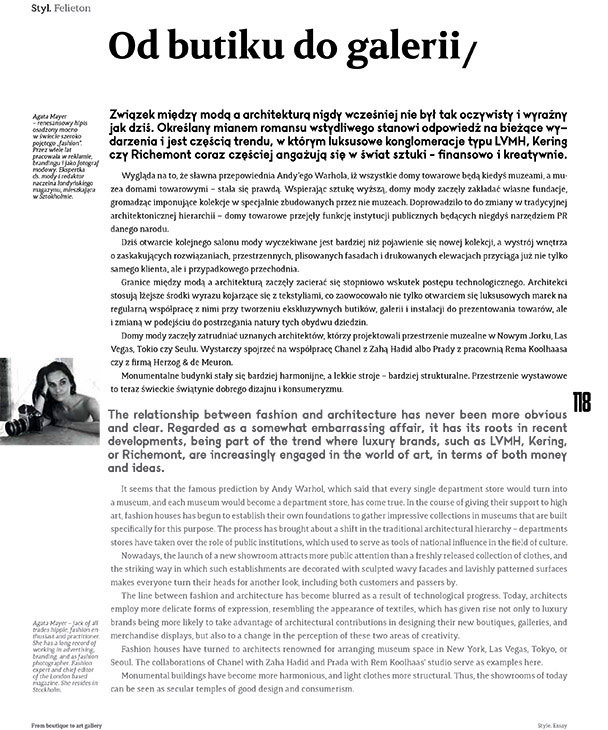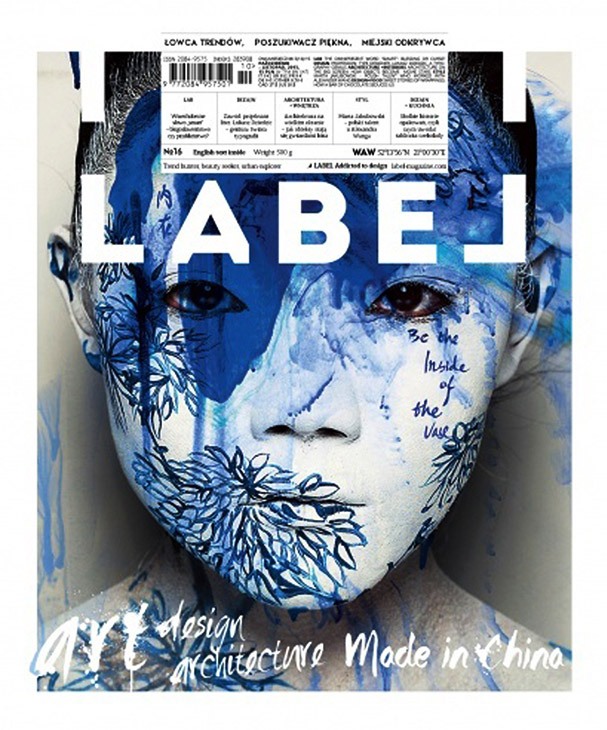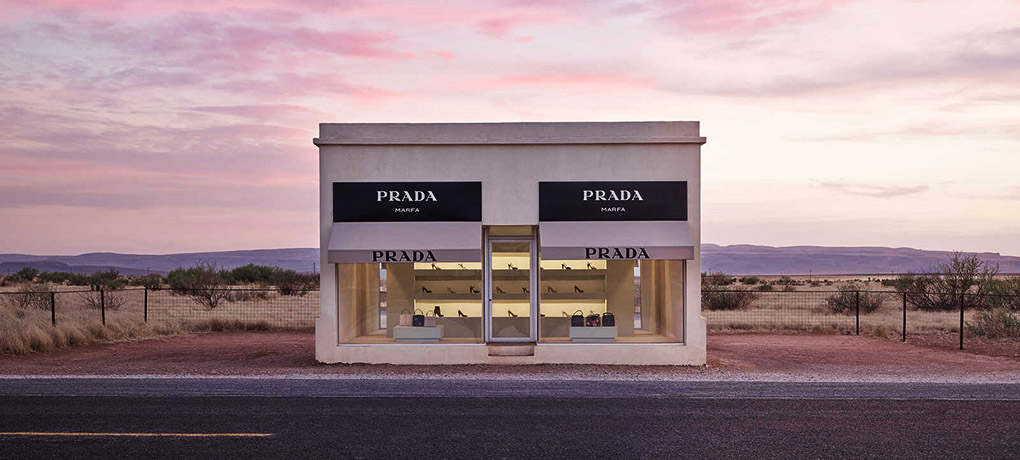FROM BOUTIQUE TO ART GALLERY
writer: Agata Mayer | images: Pinterest

The relationship between fashion and architecture has never been more obvious
and clear. Regarded as a somewhat embarrassing affair, it has its roots in recent developments, being part of the trend where luxury brands, such as LVMH, Kering, or Richemont, are increasingly engaged in the world of art, in terms of both money and ideas.
It seems that the famous prediction by Andy Warhol, which said that every single department store would turn into
a museum, and each museum would become a department store, has come true. In the course of giving their support to high
art, fashion houses has begun to establish their own foundations to gather impressive collections in museums that are built
specifically for this purpose. The process has brought about a shift in the traditional architectural hierarchy – departments
stores have taken over the role of public institutions, which used to serve as tools of national influence in the field of culture.
Nowadays, the launch of a new showroom attracts more public attention than a freshly released collection of clothes, and
the striking way in which such establishments are decorated with sculpted wavy facades and lavishly patterned surfaces
makes everyone turn their heads for another look, including both customers and passers by. The line between fashion and architecture has become blurred as a result of technological progress. Today, architects
employ more delicate forms of expression, resembling the appearance of textiles, which has given rise not only to luxury
brands being more likely to take advantage of architectural contributions in designing their new boutiques, galleries, and
merchandise displays, but also to a change in the perception of these two areas of creativity.
Fashion houses have turned to architects renowned for arranging museum space in New York, Las Vegas, Tokyo, or
Seoul. The collaborations of Chanel with Zaha Hadid and Prada with Rem Koolhaas' studio serve as examples here.
Monumental buildings have become more harmonious, and light clothes more structural. Thus, the showrooms of today
can be seen as secular temples of good design and consumerism.


My article appeared in the 16th issue of Label magazine.





